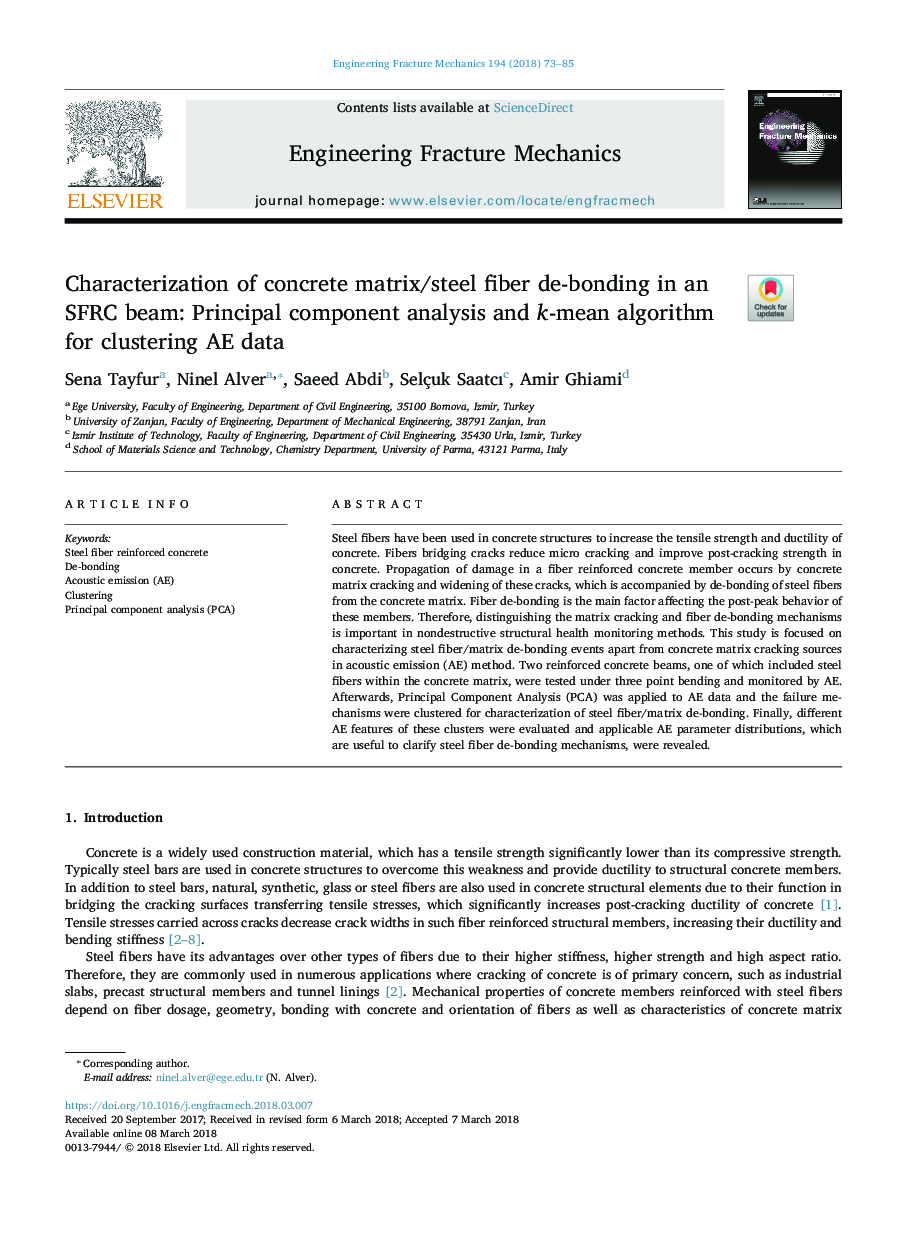| Article ID | Journal | Published Year | Pages | File Type |
|---|---|---|---|---|
| 7168871 | Engineering Fracture Mechanics | 2018 | 13 Pages |
Abstract
Steel fibers have been used in concrete structures to increase the tensile strength and ductility of concrete. Fibers bridging cracks reduce micro cracking and improve post-cracking strength in concrete. Propagation of damage in a fiber reinforced concrete member occurs by concrete matrix cracking and widening of these cracks, which is accompanied by de-bonding of steel fibers from the concrete matrix. Fiber de-bonding is the main factor affecting the post-peak behavior of these members. Therefore, distinguishing the matrix cracking and fiber de-bonding mechanisms is important in nondestructive structural health monitoring methods. This study is focused on characterizing steel fiber/matrix de-bonding events apart from concrete matrix cracking sources in acoustic emission (AE) method. Two reinforced concrete beams, one of which included steel fibers within the concrete matrix, were tested under three point bending and monitored by AE. Afterwards, Principal Component Analysis (PCA) was applied to AE data and the failure mechanisms were clustered for characterization of steel fiber/matrix de-bonding. Finally, different AE features of these clusters were evaluated and applicable AE parameter distributions, which are useful to clarify steel fiber de-bonding mechanisms, were revealed.
Keywords
Related Topics
Physical Sciences and Engineering
Engineering
Mechanical Engineering
Authors
Sena Tayfur, Ninel Alver, Saeed Abdi, Selçuk Saatcı, Amir Ghiami,
